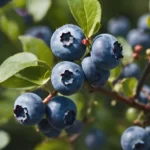Lavender, with its enchanting fragrance and beautiful blooms, is a cherished plant in gardens and landscapes worldwide. Known for its versatility in culinary, medicinal, and decorative uses, lavender also raises questions regarding its environmental impact. There are growing concerns about whether lavender can be invasive in certain regions. This article aims to shed light on the invasiveness of lavender, providing essential information for gardeners and environmental enthusiasts.
Lavender
Lavender belongs to the genus Lavandula, with several species and varieties, including Lavandula angustifolia (common lavender) and Lavandula x intermedia (lavandin). Each type has specific growth habits and preferences. Lavender typically thrives in sunny locations with well-drained soil and is known for its drought tolerance. While it is native to the Mediterranean region, lavender is cultivated in various parts of the world, from Europe to the United States.
Lavender’s Invasiveness
To understand lavender’s potential invasiveness, it’s important first to define what makes a species invasive. An invasive species is one that is non-native to the ecosystem and causes harm to the environment, human health, or the economy. Lavender has been flagged as potentially invasive in certain areas, particularly where its natural growth checks, like climate and soil conditions, are absent. The plant’s impact on local ecosystems, especially its interaction with native species and biodiversity, is a crucial aspect of this discussion.
Factors Contributing to Lavender’s Invasive Nature
Lavender’s potential to become invasive stems from several key characteristics. Firstly, its adaptability allows it to thrive in a variety of climates and soil types, beyond its native Mediterranean environment. This hardiness can lead to lavender establishing itself in areas where it was not originally intended to grow.
The plant’s reproductive strategies further contribute to its invasive potential. Lavender can spread through seed dispersal, carried by wind or animals, and through vegetative propagation, where new plants grow from cuttings or root divisions. These methods can lead to rapid and widespread growth, especially in favorable conditions.
Compared to native flora, lavender can sometimes outcompete local plant species. Its dense growth can overshadow smaller, native plants, and its extensive root system may take up more water and nutrients, leaving less available for surrounding vegetation.
Managing Lavender in Gardens and Landscapes
To prevent lavender from becoming invasive, responsible planting and maintenance are crucial. Gardeners should choose lavender varieties that are less aggressive and more suited to their local climate and ecosystem. It’s also important to monitor the plant’s growth and spread, trimming back and deadheading regularly to control seed dispersal.
In sensitive areas, particularly close to natural reserves or in regions where lavender is not native, it might be advisable to avoid planting it altogether or to use containment strategies, such as planting in pots or designated areas with barriers to limit spreading.
Legal and Environmental Considerations
In some regions, there may be legal restrictions on planting lavender, especially if it’s recognized as an invasive species. These regulations are often in place to protect native ecosystems and biodiversity. Gardeners should research and adhere to local guidelines and restrictions to avoid potential legal issues and environmental harm.
The environmental ethics of planting lavender, or any non-native species, should also be considered. Introducing non-native plants into a landscape can have unintended consequences, not only on plant life but also on local wildlife that depends on native species for food and habitat. Consulting with local gardening experts, extension services, or ecological organizations can provide valuable insights into making environmentally responsible choices.
Conclusion
While lavender is valued for its beauty, fragrance, and versatility, its potential to become invasive in certain environments cannot be ignored. Gardeners should exercise caution and responsibility when incorporating lavender into their landscapes. By staying informed about the specific species and varieties of lavender, understanding local ecosystems, and adhering to legal and environmental guidelines, gardeners can enjoy the benefits of this beloved plant without compromising the health and diversity of the surrounding environment.
In conclusion, the decision to plant lavender should be made with careful consideration of its potential impact. Balancing the desire for aesthetic appeal with ecological responsibility is key to sustainable gardening. By making informed choices, gardeners can contribute positively to their local ecosystem while enjoying the many benefits that plants like lavender have to offer.



